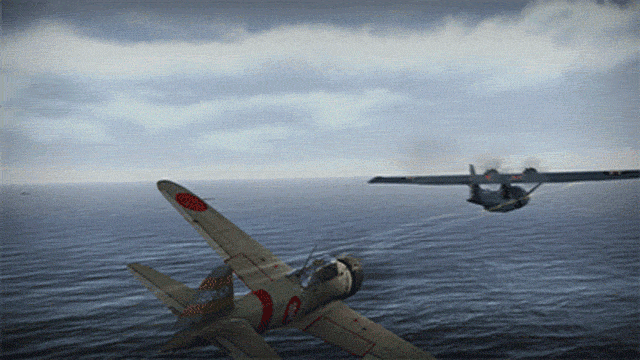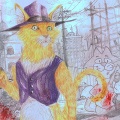|
Throatwarbler posted:EDIT: I notice that non-military people, especially urban dwellers, often don't have a very good of idea of how difficult it is to do anything at night when you can't see poo poo. Do you think maybe it's because night combat/operations during any era is not well represented in popular media, for obvious reasons(can't see poo poo)?
|
|
|
|

|
| # ? May 16, 2024 05:20 |
|
Trin Tragula posted:Basically, what they're for is being good officer-like leaders who can also speak good English. This means they can translate Lieutenant Aireypants-Fartington Sahib's orders into the unit's language; the sahib doesn't risk looking like a prat or causing a disaster by speaking lovely Urdu, and the blokes still have an immediate officer-type that they can have a conversation with. Most career British Indian Army officers spoke functional, if not fluent Urdu.* By WWII, officers posted to the British Indian Army had to pass the "Urdu Elementary Examination" within a year of disembarking in India. Officers who passed the exam earned an £11 bonus and had better chances of being promoted. Those who failed were refused leave and had their pay docked. I'd assume officers in Ghurka units faced similar incentives to learn Nepalese (the British generally referred to this language as "Ghurkali"), much as officers in Sikh units would have probably been pushed to learn basic Punjabi. And because of the cultural and ethnic diversity of the British colonial military it wasn't uncommon for long-serving officers to pick up multiple other langues. Field Marshal William Slim, for example, spoke Urdu, Hindi, and Nepalese quite fluently. Urdu being the lingua franca of the British Indian Army, since most of the colonial army came from northern India. Trin Tragula posted:Most of them are good soldiers, and could likely have led their men without white supervision (but, because the Empire). After the war, a couple of limited schemes for commissioning Indians as subalterns were put in place, but they stayed an extreme minority until independence. In the inter-war years, the British were really reluctant to commission Indian officers. Some of this resistance stemmed from the Kiplingesque Gunga Din attitude some British leaders had towards Indians. They saw Indians as loyal followers, but incapable of leading themselves. But as you note, the biggest reason was fear. The British Indian Army was an instrument of imperial control. This was one reason why it had so many Punjabis, Sikhs, and Ghurkas. Create a small group of people who benefit from the colonial system and have a vested interest in supporting it. However, the British did commission some Indian officers. During WWI, the massive expansion of the Indian Army and heavy casualties amongst the British officer corps made British administrators realize that Indians might need to take a greater leadership role in the military. Post-1918, the Raj came under pressure from Indian national leaders to "Indianize" the colonial military and civil service. In response to this, the British India Army made several changes. In addition to the Indian commissioned officers (ICOs) trained at Dehradun, they also sent some to Sandhurst to become King's Commissioned Indian Officers (KCIOs). Several KCIOs went on to become senior officers in the Pakistani and Indian armed forces. World War II further accelerated the recruitment of Indian officers. In 1939, the Indian Army had only 1500 Indian-born officers. By 1945, the British Indian Army had about 15,000 commissioned Indian officers.* In some units, up to a third of the officers were Indian. By 1944 there were Indian majors and lieutenant colonels leading battalions. There were quite a few Indian pilots, including Battle of Britian veteran and all-round badass Mahinder Singh Pujji.  *The Indian Army actually had a great deal of trouble recruiting enough qualified officers during the war. Most middle-class and professional Indians realized they could make more money and live better in civilian life, so they didn't volunteer for the military. Individuals with nationalist leanings didn't want to join a British colonial institution and those who did try to join were usually turned away. Bacarruda fucked around with this message at 03:26 on Dec 4, 2014 |
|
|
|
steinrokkan posted:There's a decent thesis paper that argues that the system of fortifications and settlements in the more densely populated parts of Europe than those invaded by Mongols presented an insurmountable obstacle to the hordes, if are interested: http://theses.ucalgary.ca/bitstream/11023/232/2/ucalgary_2012_pow_lindsey.pdf Neat! I've made some half-assed posts about that topic, it'll be nice to see if it accords with somebody's actual scholarship.
|
|
|
Ensign Expendable posted:Well, a rock (tying to stick is optional) was enough to disable a Japanese tank. Jamming a fist sized rock between the hull and turret was enough to break the turret rotation mechanism, and jamming it between the track and the idler took the track off. Throatwarbler posted:It might have been at night. Aren't lots of special operations type missions dependant on having a clear night with a full moon? Obviously less relevant now that night vision gear has matured technologically.
|
|
|
|
|
Judging by Japanese armour quality, their metal was not exactly the greatest.
|
|
|
|
Throatwarbler posted:It might have been at night.
|
|
|
|
Slavvy posted:
This was a fairly common problem with early light tank designs. Track and drive assemblies could be quite flimsy. Which is probably why there are quite a few stories of Finns taking down T-26s by jamming logs in the bogies and Aussies taking down Panzer IIs with crowbars.
|
|
|
|
Ensign Expendable posted:Judging by Japanese armour quality, their metal was not exactly the greatest. This was part of why Japan was so desperate to expand, I believe. Japan has little mineral wealth and their metalworking was terrible as a result. The legend of fabulous samurai swords that can cut through anything is ludicrous considering most of them couldn't cut through anything at all; having control of mainland territory or ports would enable them to build a real metallurgical industry.
|
|
|
|
It wasn't just metal, It was quite a few natural resources including oil.
|
|
|
|
|
corn in the bible posted:The legend of fabulous samurai swords that can cut through anything is ludicrous considering most of them couldn't cut through anything at all I'm anything but an expert on this but I have always had the impression that Japanese swordmakers were pretty excellent.
|
|
|
|
bewbies posted:I'm anything but an expert on this but I have always had the impression that Japanese swordmakers were pretty excellent.
|
|
|
|
Bacarruda posted:This was a fairly common problem with early light tank designs. Track and drive assemblies could be quite flimsy. Which is probably why there are quite a few stories of Finns taking down T-26s by jamming logs in the bogies and Aussies taking down Panzer IIs with crowbars. The thing with logs isn't that rare, I'll give you that, but having a turret that can easily be locked with a rock is a pretty glaring design flaw. bewbies posted:I'm anything but an expert on this but I have always had the impression that Japanese swordmakers were pretty excellent. Turns out, not really. http://www.dtic.mil/get-tr-doc/pdf?AD=ADB962712
|
|
|
|
bewbies posted:I'm anything but an expert on this but I have always had the impression that Japanese swordmakers were pretty excellent.
|
|
|
|
corn in the bible posted:The legend of fabulous samurai swords that can cut through anything is ludicrous considering most of them couldn't cut through anything at all; It's true if your definition of "anything" is peasants and bamboo.
|
|
|
|
Polikarpov posted:It's true if your definition of "anything" is peasants and bamboo. Well, what else would you ever need to cut 
|
|
|
|
Arquinsiel posted:I've been playing Insurgency of late, and what I've learned playing as Mohammed Derkaderk Stereotype is that while I can't see poo poo at night, the things I want to shoot at conveniently stick flashlights on their guns so I can just shoot at those until they go out. That's how I played Metro 2033. You shoot at the shining bit. If the shining bit falls on the floor and illuminates the ceiling, you did it right. Bacarruda posted:This was a fairly common problem with early light tank designs. Track and drive assemblies could be quite flimsy. Which is probably why there are quite a few stories of Finns taking down T-26s by jamming logs in the bogies and Aussies taking down Panzer IIs with crowbars. Australians. Figures they'd be the ones to try crowbaring a tank. Then again, I wouldn't think there where that many PzIIs around anyways. HEY GAL posted:They're beautifully made, but they have materials problems, is I think what they were saying. I guess the iron here is full of coal, that's where the "folded a thousand times" myth comes. Polikarpov posted:It's true if your definition of "anything" is peasants and bamboo. So, a Japanese samurai vs. European knight...
|
|
|
|
bewbies posted:I'm anything but an expert on this but I have always had the impression that Japanese swordmakers were pretty excellent. The craftsmanship is quite good for 19th century standards, but that doesn't say anything at all about quality of steel that was produced on an industrial scale. The japanese swords made for officers in WW2 are trash.
|
|
|
|
JaucheCharly posted:The craftsmanship is quite good for 19th century standards, but that doesn't say anything at all about quality of steel that was produced on an industrial scale. The japanese swords made for officers in WW2 are trash. But a sword was still a better hand-to-hand weapon than a rifle with a bayonet, which is why American soldiers learned it was better to shoot them with a handgun instead. The fact that Japanese officers still used swords to kill people, while American pop culture saw them as clumsy outdated metal, is a factor that led to the katana's mythic reputation. That and propaganda about the superior quality of Japanese swords, which still had an impact after the war during the American occupation.
|
|
|
|
bewbies posted:I'm anything but an expert on this but I have always had the impression that Japanese swordmakers were pretty excellent. Well you can argue that they were pretty good simply because they had to work with absolutely poo poo raw materials and still created functional blades that did what they were meant to do. Well, at least the actual historical ones - the mass-produced officer swords in WWII were indeed trash.
|
|
|
|
Arquinsiel posted:I've been playing Insurgency of late, and what I've learned playing as Mohammed Derkaderk Stereotype is that while I can't see poo poo at night, the things I want to shoot at conveniently stick flashlights on their guns so I can just shoot at those until they go out. That's so silly of Insurgency to set it up like that. Modern US forces use night-vision gear that is entirely in the infrared. Their flashlights are similarly in the infrared, and are invisible to the naked eye.
|
|
|
|
Chamale posted:But a sword was still a better hand-to-hand weapon than a rifle with a bayonet, which is why American soldiers learned it was better to shoot them with a handgun instead. The fact that Japanese officers still used swords to kill people, while American pop culture saw them as clumsy outdated metal, is a factor that led to the katana's mythic reputation. That and propaganda about the superior quality of Japanese swords, which still had an impact after the war during the American occupation. Swords were classified as inferior melee weapons. Inferior even to spades. Take a look at the melee weapons that people used when storming a trench. It's a bunch of clubs or spades. Where's the guy here that gave us the rundown? You shoot people, because it's safer and better at stoping them, you stab them with a bayonet or sword, they still go on and might hurt you too. That's why you have veterans from everywhere tell that you use your spade to chop at the neck, because that's pretty likely to knock out or kill a person instantly. You can safely assume that using a sword to chop somebody's head off in front of other people is a ritualized execution, not that it's a particularly great (and easy) option to kill people. Taking off a person's head with a single strike is also a test of skill that takes expertise.
|
|
|
|
JcDent posted:I guess the iron here is full of coal, that's where the "folded a thousand times" myth comes. The katana is perfectly good sword for what it is. Its a weird sword in that the blade heavy as hell but is about as long as most other cultures one handed swords. They mostly were not fighting dudes with steel armor so it was perfectly good for stabbing and cutting against what most opponents would be wearing. It was also, like European swords, a secondary weapon the vast majority of the time. Japanese dudes fought European dudes back in the day, and their swords were not magically better nor significantly worse. The katana is made with the softer, lower quality iron in the center with hardened high quality steel welded along the edge. Europe made swords the same way until the 1100-1200s or so when better steel making technologies became widespread which meant the whole sword was made out of the high quality hard and springy steel. A katana can not bend as much before it is permanently bent/broken since the core is softer iron that won't spring back. In general medieval European swords get more length and effective cutting area from the same amount of steel. JaucheCharly posted:Swords were classified as inferior melee weapons. Inferior even to spades. Take a look at the melee weapons that people used when storming a trench. It's a bunch of clubs or spades. Where's the guy here that gave us the rundown? You shoot people, because it's safer and better at stoping them, you stab them with a bayonet or sword, they still go on and might hurt you too. That's why you have veterans from everywhere tell that you use your spade to chop at the neck, because that's pretty likely to knock out or kill a person instantly. You can safely assume that using a sword to chop somebody's head off in front of other people is a ritualized execution, not that it's a particularly great (and easy) option to kill people. Taking off a person's head with a single strike is also a test of skill that takes expertise. Do you mean specifically in WWII and WWI? Because swords were pretty goddamn popular and used a hell of a lot right up until WWI. A dude with a sword would have a huge reach advantage over the spade guy and just stab him before he got close enough to hit him in the neck. Now swords were completely a waste of metal and time to equip and army with of course since yeah, the few times you would need it other stuff is almost as good, and that metal would better be used to make guns. WoodrowSkillson fucked around with this message at 09:07 on Dec 4, 2014 |
|
|
|
Patton had a thing for swords, but that's because he was a delusional maniac that believed he was Alexander. E: And when writing on saber form in the year of our lord nineteen hundred and thirteen, he cited the Peninsular War as the basis for his stab-focused doctrine. This crazy shithead was citing Napoleonic era war in a writing the year before WWI. FAUXTON fucked around with this message at 09:13 on Dec 4, 2014 |
|
|
|
We're talking about WWI and WWII
|
|
|
|
JaucheCharly posted:We're talking about WWI and WWII Yes, but you seem to be saying a sword is an inferior melee weapon to a spade. WoodrowSkillson is saying that if that were the case, medieval Europeans would have used spades instead of swords as their backup weapon. I'm not saying it was a great idea for the Japanese army to send officers charging into gunfire with swords, I'm saying that a sword is effective if you do get within arm's reach and that's why the katana developed a reputation as a particularly sharp and deadly weapon.
|
|
|
|
Ensign Expendable posted:Judging by Japanese armour quality, their metal was not exactly the greatest. American documents of Japanese vehicles stated that the quality of both materials and machining was outstanding - the problem was that there just was too little material to stop a Edit: E.g.: "e. Armor. Japanese tanks, so far examined, have been lightly armored, but the plates tested have been of good quality. In the arrangement of armor, use has been made of deflection angles, but not to any considerable degree. In many cases reentrant angles have been formed, but no steps have been noted to protect turret rings or mantlets against jamming or splash." So maybe outstanding is too much of a praise, but you catch my drift. http://www.ibiblio.org/hyperwar/Japan/IJA/HB/HB-9.html#IV steinrokkan fucked around with this message at 09:18 on Dec 4, 2014 |
|
|
|
Chamale posted:Yes, but you seem to be saying a sword is an inferior melee weapon to a spade. WoodrowSkillson is saying that if that were the case, medieval Europeans would have used spades instead of swords as their backup weapon. I'm not saying it was a great idea for the Japanese army to send officers charging into gunfire with swords, I'm saying that a sword is effective if you do get within arm's reach and that's why the katana developed a reputation as a particularly sharp and deadly weapon. It is inferior to a spade in WW1 and WW2 context, and also to a rifle with bayonet attached in the era before that. It's a backup weapon. "Seitengewehr", "Unterwehr", etc.
|
|
|
|
Edit: Beaten, nm.
|
|
|
|
Chamale posted:But a sword was still a better hand-to-hand weapon than a rifle with a bayonet, which is why American soldiers learned it was better to shoot them with a handgun instead. The fact that Japanese officers still used swords to kill people, while American pop culture saw them as clumsy outdated metal, is a factor that led to the katana's mythic reputation. That and propaganda about the superior quality of Japanese swords, which still had an impact after the war during the American occupation. quote:“Ronald Reagan has a stack of three-by-five cards in his lap. He skids up a new one: "What advice do you, as the youngest American fighting man ever to win both the Navy Cross and the Silver Star, have for any young marines on their way to Guadalcanal?"
|
|
|
|
Yes, that quote has been given before, back the last time this argument came up. Unfortunately that quote, being entirely a work of fiction, doesn't say anything except about how much scifi author Neal Stephenson loooooves swords. He really loving loves swords. Actual accounts by marines fighting at Guadalcanal and similar barely mention swords except as neat souvenirs to pick up after the battle. Japanese officers used swords to kill people - overwhelmingly not in battle, but instead to hack off the heads of defenseless captured civilians and POWs. Banzai charges were in general absolute bloodbaths - for the attackers. Wikipedia posted:The last and largest Banzai attack of the war took place in the Battle of Saipan in 1944 where, at the cost of almost 4,300 dead Japanese soldiers, it almost destroyed the 1st and 2nd Battalions of the 105th U.S. Infantry, who lost almost 650 men. So you're attacking with a massive numerical advantage... and you take a 7:1 loss ratio? That's a success? The semi-auto garands and thompson SMGs *were* better 'hand to hand weapons' than anything the Japanese had. The myth of the katana is built on bullshit.
|
|
|
|
Fangz posted:
Well, when you're the country that learned the wrong lesson from the Russo-Japanese war, it does seem like a success.
|
|
|
|
Fangz posted:Yes, that quote has been given before, back the last time this argument came up. As I said on this page, banzai charges were a terrible idea. Rifles and SMGs are far more effective at killing people than any weapon that requires you to get within a swordlength of the enemy. But we're talking about the myth of the katana, and the reason for that perception of it as a particularly good sword. I'm saying it was a better weapon than a rifle or shovel once the wielder got in range, and I'm trying to find that effortpost earlier in the thread where someone quoted a Marine saying that the only effective counter to a katana other than your rifle is your pistol. Of course, the real reason for the banzai charges was the IJA's doctrine of death before surrender. Where an attack with rifles might result in some officers being killed and the remaining force surrendering, a sword and bayonet charge is more likely to result in an unlikely success or total destruction.
|
|
|
|
Chamale posted:As I said on this page, banzai charges were a terrible idea. Rifles and SMGs are far more effective at killing people than any weapon that requires you to get within a swordlength of the enemy. But we're talking about the myth of the katana, and the reason for that perception of it as a particularly good sword. I'm saying it was a better weapon than a rifle or shovel once the wielder got in range, and I'm trying to find that effortpost earlier in the thread where someone quoted a Marine saying that the only effective counter to a katana other than your rifle is your pistol. Of course, the real reason for the banzai charges was the IJA's doctrine of death before surrender. Where an attack with rifles might result in some officers being killed and the remaining force surrendering, a sword and bayonet charge is more likely to result in an unlikely success or total destruction. The myth of the katana arises many decades after the war, when suddenly Japan and all things Japanese became really fashionable amongst a young population that never fought in WWII. What does 'once the wielder got in range' even mean? A knife is a better weapon than a sword, 'once the wielder got in range'. The range is the whole point. At least with a shovel you can dig a hole to hide yourself from all the firepower they are throwing at you. The only effective counter other than your rifle is your pistol? What does that leave your Marine with as his alternatives? His grenade? The entrenching tool in his backpack? His meal ready to eat?
|
|
|
|
Fangz posted:Yes, that quote has been given before, back the last time this argument came up. You are correct, but this is an example of the Katana's main effect being a post-war cultural icon. It's also amusing to imagine Reagan getting cussed out 
|
|
|
|
Fangz posted:The myth of the katana arises many decades after the war, when suddenly Japan and all things Japanese became really fashionable amongst a young population that never fought in WWII. What does 'once the wielder got in range' even mean? A knife is a better weapon than a sword, 'once the wielder got in range'. The range is the whole point. At least with a shovel you can dig a hole to hide yourself from all the firepower they are throwing at you. This argument obviously isn't getting anywhere unless I find that post about banzai attacks, so if anyone who remembers it knows where to look I'd appreciate that.
|
|
|
|
I assume having the swords was also just a culturally specific way of distinguishing the average Japanese grunt and the officers meant to embody the bushido samurai-officer spirit. The same way other militaries have sabres for their officers, because tradition.
|
|
|
|
So I guessed I missed that we were discussing Japanese swords in the WWII era which seems kind of irrelevant to me, I was asking more about how they compared to other weapons from around the world in the eras when swords were useful.
|
|
|
|
Japanese katana planes look p good against inferior Western planes: 
|
|
|
|
bewbies posted:So I guessed I missed that we were discussing Japanese swords in the WWII era which seems kind of irrelevant to me, I was asking more about how they compared to other weapons from around the world in the eras when swords were useful. They were generally inferior to, say, European swords. Not because the craftsmen were unskilled, but because of the material they had access to. There was a lot more iron in a Japanese sword, which meant they would be softer and bend or break much easier.
|
|
|
|

|
| # ? May 16, 2024 05:20 |
|
Fangz posted:The myth of the katana arises many decades after the war, when suddenly Japan and all things Japanese became really fashionable amongst a young population that never fought in WWII. What does 'once the wielder got in range' even mean? A knife is a better weapon than a sword, 'once the wielder got in range'. The range is the whole point. At least with a shovel you can dig a hole to hide yourself from all the firepower they are throwing at you. No MREs, it was just the Marine and his C-Ration against the Glorious Unyielding Katana!
|
|
|






































